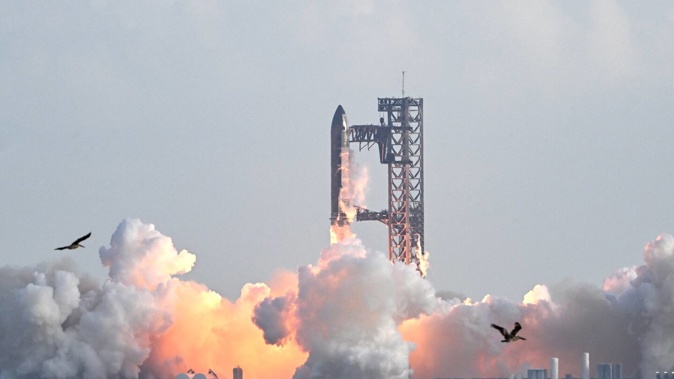
SpaceX’s Starship megarocket roared into the skies today on its 10th test flight, turning in a strong performance after a series of fiery failures had begun to cast doubt on its future.
Towering 123m, Starship is the most powerful launch vehicle ever built and key to founder Elon Musk’s vision of carrying humanity to Mars, as well as Nasa’s plans to return astronauts to the moon.
The stainless-steel colossus blasted off from the company’s Starbase in southern Texas at 6.30pm local time to loud cheers from engineering teams, as seen in a live webcast.
A few minutes into the launch, the first-stage booster known as Super Heavy splashed down into the Gulf of Mexico, triggering a sonic boom on its way.
Unlike other recent tests, SpaceX opted not to attempt a catch with the giant “chop stick” arms of the launch tower, instead testing how it would perform if an engine cut out.
Attention then shifted to the upper stage - also known individually as Starship and intended to one day carry crew and cargo - to demonstrate its capabilities as it soared into space.
For the first time, SpaceX was able to successfully deploy eight dummy Starlink internet satellites, with onboard cameras beaming back live views of a robotic mechanism pushing each out one by one.
It was not all smooth sailing.
Some heat tiles fell away, and a small section of a flap burned off during the vessel’s fiery descent, as it was enveloped in pink and purple plasma.
SpaceX communications manager Dan Huot said much of this was expected as the vehicle was intentionally flown on a punishing trajectory with some tiles removed.
“We’re kind of being mean to this starship a little bit,” he said on the webcast. “We’re really trying to put it through the paces and kind of poke on what some of its weak points are.”
“Great work by the SpaceX team!!” Musk wrote on X.
Critical mission
Much had been riding on the mission, after the last three flights ended with the upper stage exploding: twice over the Caribbean and once after reaching space.
In June, an upper stage blew up during a ground test.
This time, the upper stage successfully splashed down in the Indian Ocean.
“Splashdown confirmed! Congratulations to the entire SpaceX team on an exciting 10th flight test of Starship!” the US company wrote on X after the roughly hour-long mission.
Despite recent setbacks, Starship was not seen as being at a crisis point.
SpaceX’s “fail fast, learn fast” philosophy has already given it a commanding lead in launches with its Falcon rockets, while Dragon capsules ferry astronauts to the ISS and Starlink has become a geopolitical asset.
Still, even with a successful 10th flight, major challenges loom. Musk has identified developing a fully reusable orbital heat shield as the toughest task, noting it took nine months to refurnish the Space Shuttle’s heat shield between flights.
“What we’re trying to achieve here with Starship is to have a heat shield that can be flown immediately,” he said on a webcast on Tuesday.
Another hurdle is proving Starship can be refuelled in orbit with super-cooled propellant - an essential but untested step for the vehicle to carry out deep-space missions.
Time is running short to ready a modified version as Nasa’s lunar lander for 2027, and for Musk to make good on his vow to send an uncrewed Starship to Mars next year.
-Agence France-Presse
Take your Radio, Podcasts and Music with you









